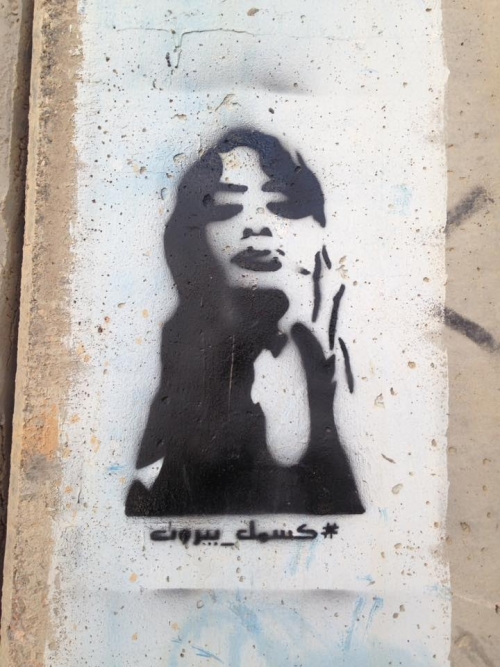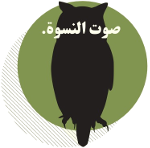
It was late August, when I heard about Nourhan Hammoud’s suicide. As usual personal stories travel fast in Lebanon, like news across a grapevine. In the next couple of days, social media platforms were filled with personal statements expressing their opinion, some supporting, others denying Nourhan’s personal choice, as well as articles that reported the incident from different news outlets. One particular article, shared by many people on social media caught my attention, under the title “Asdika2 Nourhan Inta7arouha”, in Khattams an online magazine. It was an opinion piece by a journalist who thought she had the right to judge Nourhan’s personal decision to leave this place, her family, her friends, and everyone who thinks of attempting suicide. I was aggravated by this article and the style of the writer. I don’t know if it has crossed her mind how people at risk of suicide, or Nourhan’s bereaved family and friends might feel reading this, how such judgments and trivialization might trigger people. But unfortunately that wasn’t the only article. The more I searched, the more articles I found some along the same lines.
There are several precipitating factors leading to suicide, mental illness, substance use, physical illness,access to means, media reports, etc. Reporting suicide by media outlets has been a major field of study since the early 1970s, due to widely spread belief that media reports on suicide may lead to imitative or copycat acts especially by vulnerable individuals. According to the World Health Organization (WHO) relevant circulation of information, responsible reporting and public education are fundamental components in the success of suicide prevention programs (WHO, 2000). Along with the International Suicide Foundation (ISF) the WHO developed a set of guidelines for media professionals entitled: “Preventing Suicide: A Resource for Media Professionals” that serves as a guide for media professionals across the globe on how to responsibly report suicide.
In addition to the above, the WHO (2000) guidelines urge media professionals to take the opportunity to educate the public about suicide, avoid language which sensationalizes or normalizes suicide, or presents it as a solution to problems, evade blatant placement and undue repetition of stories about suicide. Moreover, the guidelines, advise media professionals to avoid clear and detailed explanation of the method or site of a completed/ attempted suicide and most importantly to show respect to people bereaved by suicide. The WHO’s aim from such an initiative was in no way to limit freedom of expression but rather to produce responsible reports due to the sensitivity of this topic .
After looking into media coverage of Nourhan’s suicide, it became clear that journalists were not keen on applying the guidelines (were they even aware that they exist?) or even showing respect to Nourhan or her family. The Lebanese media relied on terminologies to exaggerate and sensationalize the topic and the experience for the reader. Some of those terminologies were:
• “Nourhan Wadaat al Hayat”, “Ekhtarat qadaraha bi yadiha”, atlakat al shaba Nourhan Hammoud Al Hourriya li jassadiha al masjoun bi doughoutat al hayat… (Al Afkar.net)
• aykanat anna el hayat la tastahiq al aana’ (kataeb.org)
• Inna al itihar horoub w jubn w istislam w ananiya w ghaba’ (http://khattamas.com)
The common approach across all reports was to delve into Nourhan’s personal life, family problems, and the possibility of the presence of mental illness (mostly depression) that led her to complete (1) suicide. Some of them even went so far as to observe Nourhan’s Facebook posts as well as her family’s and friends’ in order to extract the possible cause of suicide
Lastly, the WHO guidelines urge media to provide information about where to seek help at the end of the article to provide direct ways of support for vulnerable individuals (WHO, 10). Only one ne out of the 13 articles (Al Akhbar) mentioned briefly the action plan implemented by a local NGO (embrace) to launch a suicide hotline to aid people at risk of suicide, but did not mention how such NGOs can offer support and professional help. All the analyzed articles failed to comply with this simple instruction that the WHO deemed necessary in raising awareness and knowledge of available ways to seek help, which might decrease the chances of attempting suicide. The exclusion of such important information proved the presence of silences in the media accounts.
It was so disturbing to see those facts and to comprehend the irresponsibility of the Lebanese media on such a topic. As far as we know we lose a person every 2.5 days to suicide (Embrace, 2016), the least we can offer to the people at risk is guidance or reassurance that there are centers/NGOs willing to lend a helping hand when the road gets hard… People at risk of suicide, have a certain kind of ambivalence, a fight between wanting to live and dreading death but at the same time wanting to die. Their thoughts might be interminable and unavoidable and at many times end up alone with noone to talk to, no one to express their deepest fears to, that is why offering such information might help them realize they are not alone. Instead of writing articles and judging the person or the act, the media should focus more on writing articles that raise awareness on the topic, raise awareness on the resources available in Lebanon, though they aren’t many but both organizations Embrace and Idraac are working closely on supporting people with mental illness and people at risk of suicide. Going a step further, Embrace is initiating the first suicide helpline in Lebanon, to help people at risk of suicide. In support of this initiative, media should always mention this resource once it is active at any chance. Embrace has organized workshops around this topic for the media to shed light on the importance of their role. Hopefully such initiatives can spread to all media outlets.
I don’t understand how the journalists fail to consider that even though the person is deceased, their family/friends are still alive and they don’t need to read about their loved ones as cowards or heroes, they deserve respect and silence. If we had a community that is more accepting to mental illness and supporting to individuals that go through hell to make it through each day., andjournalists who care more about raising awareness and standing beside people, maybe people at risk of suicide would be more aware that they have support whether it is in centers or NGOs, or most importantly family and friends, or even individuals who have had similar experiences.
Discussing such issues more openly and erasing the stigma around them is a main step in raising awareness and alleviating misconceptions. And here lies the role of the Ministry of Public Health, along with the Ministry of Information to work on regulating the reports on suicide and hold workshops for all media outlets to raise awareness on the topic and on the role of the media.
Publisher:
Section:
Category:






